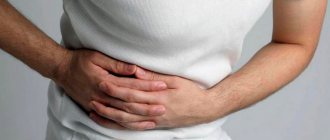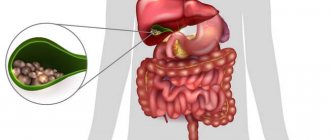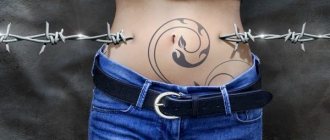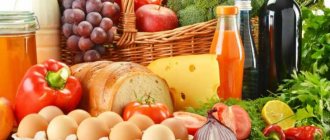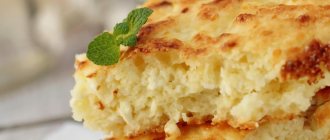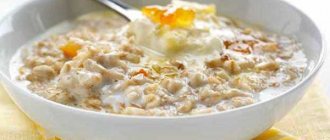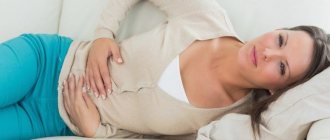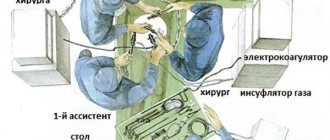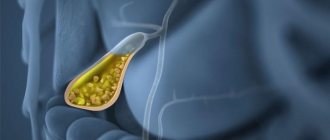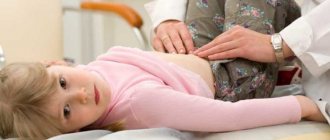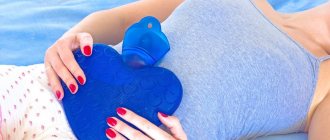Diets Varvara Igoreva 05/29/2018
Patients who have undergone laparoscopy of the gallbladder often believe that now they will have a lot of difficulties with nutrition.
- 1 Diet after gallbladder removal, laparoscopy
- 2 Nutrition immediately after surgery
- 3 Proper diet after laparoscopy
- 4 Important principles of nutrition after gallbladder removal
- 5 Diet after laparoscopy by day
- 6 What foods are prohibited after laparoscopy
- 7 Diet two months after surgery
- 8 Simple recipes: diet after removal of gallstones
- 9 Menu option: diet for gallbladder removal after surgery
- 10 Herbal decoctions to drink after laparoscopy
- 11 Tips: How to eat healthy after gallbladder removal
- 12 Alcohol after laparoscopy
- 13 Diet after gallbladder removal: questions and answers
Diet after gallbladder removal, laparoscopy
The location of the gallbladder is the lower edge of the liver. This is where bile accumulates, which appears during the functioning of the body. Certain diseases to which the gallbladders are susceptible, for example, problems with stones, may lead to the need for an operation to surgically remove them. This operation is called cholecystectomy. The most gentle option for surgery to remove the gallbladder is laparoscopy. This type of surgery for stones in the organ is also called laparoscopic cholecystectomy. This operation consists of the fact that when removing the gallbladder, the anterior abdominal wall is not cut, but pierced in several places.
The gallbladder has been removed, but bile has not disappeared; the liver continues to produce it in the same way as before and in the same volumes necessary for complete digestion of food. But if previously bile accumulated in the gallbladder, now, due to the absence of a reservoir created by nature, the bile will go directly to the intestines. This is why a diet after gallbladder removal is simply necessary.
Patient behavior after laparoscopy over the gallbladder:
- You must abstain from sexual activity for three weeks;
- It is necessary to ensure that the stool is soft and regular;
- You should stop playing sports for up to six weeks. Heavy physical labor is contraindicated;
- It is necessary to follow diet No. 5 to fight bile;
- You cannot lift heavy objects: the weight limit is 3 kg, violations are not allowed;
- You should start taking vitamins.
Features of the diet during the recovery period
To begin with, it is important to understand that the upcoming changes in diet are not just a diet. This is practically a way of life that will have to be followed in the future so that no new serious problems arise in the functioning of the gastrointestinal tract.
Correction of nutrient proportions
The daily diet must be structured in such a way that the food groups have the following ratios:
- 25% proteins. Complete proteins help normalize liver function and renew its cells. The optimal source of easily accessible and easily digestible protein is dairy products, poultry and fish.
- 25% fat. Since stones (stones in the gallbladder and its ducts) are made of cholesterol, it is necessary to reduce the amount of cholesterol-containing foods consumed as much as possible, but at the same time maintain unsaturated fats in the diet. The latter include vegetable oils. They help liquefy bile and reduce the risk of stone formation.
- 50% carbohydrates. Despite the fact that their quantity in the diet prevails, the choice of carbohydrates must be approached with special care. The problem is that foods such as baked goods or cereals provoke acidification of bile, which, in turn, causes the formation of stones. At the same time, “light” carbohydrates from sugar and products containing it, although they do not have a similar effect, due to their high calorie content, provoke the set of extra pounds and disruption of metabolic processes. Therefore, it is necessary to seek a balance between the first and second groups of carbohydrate-containing products.
One of the key roles in the diet after removal of the gallbladder is played by the intake of vitamins, especially those that support normal liver function: ascorbic acid, vitamins B and K. In addition, it is important to compensate for the lack of retinol, since it prevents bile from crystallizing.
Nutrition immediately after surgery
Of course, the doctor is obliged to advise the patient about what the diet should be like after removal of the gallbladder for the first days and how to eat immediately after surgery to remove the gallbladder. But just in case, it is better to prepare in advance and know what is possible and what is not possible in the first hours after laparoscopy. It may be difficult, but drinking any liquid during the first five hours immediately after surgery is strictly prohibited. During this time, it is better to sleep and gain strength. Then, after five hours, you are allowed to drink one or a couple sips of clean drinking water without gas. This is how you can take small sips of water at intervals of about 20 minutes.
Popular articles now
The star of “The Magnificent Century” Meryem Uzerli showed her face in a mask and gloves - it’s better not to joke with coronavirus (PHOTO)
Stole from Roksolana: Suleiman’s wife from “The Magnificent Century” showed their rare family photo
Without extra 45 kg: thinner Adele impressed with her new figure in a chic dress with a neckline
Ulyana Suprun told how to escape from the Chinese coronavirus
show more
Nutrition immediately after surgery
Thus, you should drink no more than 500 milliliters of water per day. But such a strict drinking regime will not last long. From the very next day after surgery to remove the gallbladder, you can drink water as usual again. But only water. Which one? Without gas! But drinks such as coffee, tea, juices and lemonades, as well as alcoholic beverages are not allowed. In a word, it is better to abstain from any liquid other than clean drinking still water.
After laparoscopic surgery has taken place, you cannot eat immediately. For at least half of the day, that is, about 12 hours, you need to fast and only drink liquids. After this time, if you wish, you can start eating, but only liquid diet food: light puree soup, liquid jelly, low-fat kefir. Next, diet 5 is used after removal of the gallbladder.
Fruits and vegetables in the first days after surgery
The first day after the operation involves complete fasting. The patient is not even allowed to drink water, only to wet his lips when thirsty. On days 2-4, the patient is prescribed diet No. 0a. This means that the patient is already allowed to drink water. And, in general, the diet seems to be mainly liquid and semi-liquid food. What is allowed to eat in the first days:
- Kissel from sweet berries, dried fruits;
- Diluted natural juice from apples, beets, pumpkins (separately).
- Fruit jelly is not made from sour fruits.
After surgery, the patient must eat at the same time every day. This should become a habit. Eating according to the schedule will improve the process of bile synthesis and its storage in the bile ducts.
Proper diet after laparoscopy
When 3 days have passed after surgery to remove the gallbladder, you can begin to add other types of food to your diet. You just need to remember that diet after gallbladder removal surgery is very important. Little by little, start eating porridge, boiled in water and rubbed through a sieve until it becomes fluffy. You can also boil vegetables and then make vegetable purees from them using a fork or blender. You can treat yourself to low-fat yogurt; cottage cheese is also allowed, but it must be zero-fat. An allowed delicacy is baked apples, the pulp of which must be peeled and ground.
With the onset of the fifth day after surgery with laparoscopic removal of the gallbladder, you can add a steamed protein omelet to your diet. If previously it was possible to eat only soups cooked in water, now it is allowed to use low-fat meat broth when preparing soup. You can eat some crackers as a snack. After a week, the diet continues after the operation to remove the gallbladder, and for lunch you can add boiled fish or meat, always not fatty or heavy - for example, chicken fillet. It must be eaten boiled and ground in a blender. In addition to baked apples, you can make yourself a dessert from bananas by grinding them into puree. When preparing porridge, you can already add milk.
How long should the diet be followed after gallbladder removal?
At first glance, it may seem that this period lasts quite a long time: you need to follow the diet for one and a half months. A strict diet should be followed during the first week after surgery, and then you need to follow certain principles in your daily diet. The main principle is that all food should be steamed or boiled. You need to eat in small portions 5-6 times a day. The diet after removal of the gallbladder, the menu of which should be as healthy as possible, excludes from the diet absolutely everything smoked, foods prepared with marinades, spicy and canned foods. An important point: alcohol is strictly prohibited for those who have undergone laparoscopy of the gallbladder, after which the stone has disappeared from the body.
A month and a half after laparoscopic removal of the gallbladder, you can diversify your diet. You can start introducing new products with chicken yolk.
But it should be eaten no more than once a week. You can also allow yourself a little boiled sausage, sweeten your dishes with honey, sometimes eat mild cheese, eat sour cream - preferably not too fatty, and also enjoy fresh fruits and berries. It is recommended to exclude sugar and, if necessary, add a sweetener to food and drinks instead. This diet, which must be followed after laparoscopy, is called “table no5” or “liver”.
How long should you stick to this diet?
About three months. Next, you need to consult with a gastroenterologist, who will tell you, based on the patient’s condition, how to expand and diversify his diet. But, be that as it may, smoked, spicy, canned foods, as well as pickled vegetables and fruits must be absolutely excluded from the diet.
Proper diet after laparoscopy
What can improve the condition of the body after cholecystectomy on the gallbladder, thanks to which all the stones disappeared?
The most important and priority is to eat foods rich in plant fiber - namely, raw vegetables and fruits, as well as healthy cold-pressed vegetable oils. As for alcohol, it must be absolutely excluded.
The first days after open surgery
For the first 12 hours after you leave the operating room, you are prohibited from consuming not only food, but also water. The patient requires observation by hospital staff. You can fight thirst by wiping your lips with a damp sponge. After 12 hours have elapsed, a small portion of jelly or soup is allowed.
While still in the hospital, you should already begin to develop the habit of eating fractionally - that is, once every 2 hours and in symbolic portions. It is very important to drink enough water - at least 1.5 liters.
After 24 hours from the moment of the operation, something from the list is allowed:
- A decoction of pearl barley.
- Fruit jelly.
- Weak meat broth.
From the 3rd to the 5th day you can slightly expand the diet:
- Slimy soups with vegetable broth.
- Mashed potatoes.
- Steamed omelettes.
- Juices (unsweetened and non-sour).
- Tea (slightly sweetened).
On day 7, you can start adding the following little by little:
- Dairy products.
- Boiled fish.
- Dietary meat.
- Low fat cottage cheese.
- Dried bread (no more than 100 gr.).
- Natural juices, slightly sweet tea, still water.
A week after the operation, if no complications or problems appear, the patient switches to diet No. 5.
If we are talking about laparoscopy, which is not as traumatic as open surgery, then you can eat in the first 12 hours. Soup and jelly are allowed. And switching to diet No. 5 is recommended on the third day.
Important principles of nutrition after gallbladder removal
1. Small meals will help restore the body after laparoscopy. This means that meals should be small in volume but occur frequently. If you are used to eating three times a day, then with fractional meals you should double the number of meals, that is, divide the daily diet into five to six servings. The most correct approach is to eat little by little, but every 2 hours.
2. If you have undergone surgery to remove gallstones, you need to strictly adhere to the regime and eat right. It's not just what you eat, but when you eat it that matters. It is especially important not to eat before bed. Your last meal should be at least two hours before you go to bed.
3. Before going to bed, you need to eat only light food that can be quickly digested and will not cause heaviness in the stomach.
4. In order for the food to be not only satisfying, but also healthy, you should definitely include in your diet dishes that contain the maximum amount of vitamins and minerals.
5. All those who have undergone laparoscopy should completely stop drinking alcohol and smoking. This is what could lead to the appearance of a stone in the gall bladder.
The fact is that removal of the gallbladder leads to increased functioning of the hepatic ducts and liver cells. Toxic substances that enter the body when consuming alcohol and nicotine have a detrimental effect on the liver, since it is very difficult for this organ to process them. If you do not stop drinking alcoholic beverages and smoking, your health can suffer greatly from this.
6. To help your body when removing the gallbladder, you should drink herbal decoctions known for their choleretic properties every day for several months.
8. You should eat exclusively dishes that have been steamed or boiled. Baking foods in the oven is also allowed. But fried foods should be abandoned in favor of dietary dishes.
9. So that food can be quickly digested and not burden the liver, as well as other organs of the gastrointestinal tract, it must be consumed in the most crushed state and the diet must be dietary.
10. You can include porridge in your diet, but to make it easier for the body to digest it, it is recommended to choose mucus-forming cereals rather than crumbly ones.
11. After the end of the strict diet that should be followed after gall bladder surgery, you can gradually add new foods and dishes to the diet. But this should be done gradually and adhering to certain rules. You should try eating each new product in small portions.
Does the diet after gallbladder removal include fruit?
Yes. But you also need to eat them once and observe for a while what the body’s reaction will be. However, new products should not be mixed. Thus, it will be possible to calculate that if, after eating some food, unpleasant or painful sensations began to appear, a feeling of discomfort, nausea began, or stools were disturbed, then it will immediately be clear that you should immediately exclude this product from your menu.
Important principles of nutrition after gallbladder removal
12. Fresh fruits are allowed to be consumed, but the peel must be cut off, especially when it comes to apples and peaches.
List of approved products
After discharge, milk and vegetable fats are gradually introduced. They are useful because they promote maximum bile discharge. It is useful to consume butter (no more than 30 g throughout the day) and flaxseed oil.
You can eat fermented milk products, all kinds of cottage cheese dishes, you can add sour cream, but low-fat.
It is allowed to eat soft-boiled eggs or in the form of an omelet. You can eat fish no more than 2 times a week; it is better to give preference to sea fish. Suitable meats include boiled beef and chicken.
You can eat first courses, but in no case cooked in strong meat broths; everything should be as light as possible.
Bread will do, but it must be dried; you can use bran.
Be sure to include porridge in your diet, including pearl barley, oatmeal, buckwheat and rice.
You can eat almost all vegetables, pumpkin and carrots are especially useful. After surgery, it is recommended to consume turmeric, bay leaves and greens. Fruits can also be consumed, but not sour ones. It is very useful to eat melons and watermelons, they help remove toxins and prevent bile from stagnating.
Even some sweets are not prohibited. You can eat jam, honey, marmalade, jam and marshmallows. However, there should be very little of them in the diet. It is allowed to eat prunes and dried apricots.
Diet after laparoscopy by day
1. First day. If you feel normal after surgery to remove the gallbladder, a person can take a sitting position within 10 hours and drink clean water without gas.
2. Second day. The patient can already begin to move independently. For food, you are allowed to eat a little low-fat diet yogurt.
3. Third day. You are allowed to drink a cup of tea, as long as it is not strong. We do not add sugar. Also on the third day, you can indulge in a glass of low-fat kefir and liquid jelly.
4. Fourth day. You can gradually begin to eat other foods, but you should carefully monitor your post-operative condition. If you feel normal, you can diversify the menu with rosehip decoction, liquid mashed potatoes with water, drink natural freshly squeezed juice or unsweetened fruit or black tea.
5. Fifth day. At lunchtime you can eat vegetable soup, preferably pureed, and you can also add some boiled fish to the menu.
6. Sixth day. You can add a dessert of applesauce, made from baked apples without peel, to your diet. You can also make puree from fresh bananas.
7. Seventh day. The menu can be supplemented with chicken meat, which should be boiled and chopped before consumption. You are also allowed to eat a little cottage cheese. For breakfast you can eat oatmeal with a piece of stale bread.
8. Eighth day. From this day on, the diet menu can be diversified and familiar dishes can be added to it - steamed cutlets and meatballs, sandwiches with chicken and egg whites, a variety of purees, fermented milk products, chicken broth soup, pasta and rice.
Diet food
After cholecystectomy, the patient's digestive tract temporarily loses the ability to process normal food. The reason for this is the lack of a reservoir where the bile becomes fermented and concentrated. The patient's diet during the postoperative period should be light, complete and easily digestible. This is the key to adapting the gastrointestinal tract to function without the gall bladder.
You need to strictly follow the diet for a month. The following will help improve digestion quickly:
- regular consumption of food in small portions;
- 6 meals per day;
- compliance with the drinking regime (up to 2 l);
- restriction in the diet of refractory fat and fast carbohydrates;
- absence of thermal and chemical irritants.
The patient must eat on time in order to establish the process of reflexive release of bile from the liver. Small meals help to fully digest food. Water should be drunk 40 minutes before a meal and 1 after, so as not to disrupt the process of enzymatic processing of the food bolus. Chemical, thermal and mechanical sparing of the liver is aimed at preventing complications from other organs of the gastrointestinal tract.
If you neglect the rules of the diet, the patient will suffer from bloating, abdominal pain, prolonged diarrhea, or vice versa - constipation. As a result, complications will develop - inflammatory diseases of the stomach, intestines, pancreatitis, which worsens the prognosis for the patient after cholecystectomy.
What shouldn't be on the menu?
The diet after gallbladder removal involves excluding from the diet all stimulants of bile formation and foods that require increased volume and activity of bile. These are heavy animal fats, extractive substances, overly fatty and sweet foods. You can't eat:
- fat meat;
- meat broths;
- mushrooms and all dishes made from them;
- sweets;
- creams.
Significant prohibitions apply to industrially produced products - you cannot eat sausages, pates, canned food, smoked products, pickles and marinades. To avoid stimulating liver activity, the patient should limit the amount of fiber in the diet. To do this, exclude raw vegetables, fibrous cereals (millet, pearl barley), and limit vegetable fats. You should also not eat foods that stimulate gas formation in the intestines:
- legumes;
- dark varieties of bread;
- baked goods;
- cabbage;
- radish;
- radish.
Spices should not be added to dishes. It is necessary to completely avoid alcohol, strongly brewed tea and coffee, and soda.
The patient's diet after cholecystectomy should not contain fried or heavily baked foods. Crispness is a mechanical and chemical irritant at the same time.
What will you eat?
The diet should be based on cereals, soups, and dairy products. Porridges are prepared with water or with the addition of milk. Rice, semolina, wheat groats, buckwheat, and oatmeal are ideal. Couscous, bulgur, and durum wheat pasta are allowed. At the very beginning of the diet, porridges should be liquid and boiled; already at home you can prepare cereal dishes as usual. You can add 5 g of butter per serving.
Allowed liquid dishes are vegetable soups with the addition of cereals or chopped lean meat. The first one must be cooked in vegetable broth. After boiling, the vegetables are removed, potatoes, cereals, and chicken meatballs are added to the broth. You should eat yesterday's bread. Fresh baked goods increase gas formation.
Lean meats are consumed as sources of protein: turkey, rabbit, chicken, dietary varieties of veal or pork. You can eat low-fat river or sea fish, all types of seafood. At the beginning of the diet, a soufflé is prepared from meat or ground into a homogeneous consistency. A little later you can switch to dishes made from minced meat and minced meat. Already 2 weeks after the operation, the meat can be boiled in pieces. You are allowed to eat a white omelet. The yolk is consumed at the rate of ½ per day.
Dairy products should be consumed with caution. Whole milk is drunk if the patient tolerates it well. It is better to prefer low-fat kefir, yogurt, a little fermented baked milk or low-fat cottage cheese. Hard cheese can be consumed in small quantities 2 weeks after the bladder is removed. Dairy sauces that do not contain spices or additional fat are also allowed. It is better to use dill, parsley, basil and other leafy vegetables as seasonings. It is allowed to add a small amount of soy sauce to dishes.
Salads are prepared exclusively from boiled vegetables. Allowed: beets, carrots, zucchini, cauliflower, potatoes, Jerusalem artichoke. Peppers, tomatoes and other raw vegetables are introduced into the menu 2 months after surgery. Garlic and onions will be excluded for the entire rehabilitation period.
Dishes made from flour: dumplings, pancakes, pancakes, any types of baked goods are strictly prohibited for the next 2 months after the bladder is removed.
As for drinks, the patient can afford weak coffee or tea with added milk, chicory drink, rosehip decoction, berry jelly, diluted juices with pulp. Before drinking mineral water, you must release gases. If you really want something sweet, you can eat a small slice of marshmallow, marshmallow or Turkish delight.
All products are consumed boiled, stewed or steamed. The food should be warm. Cold and hot foods and drinks put a strain on the gastrointestinal tract.
After normalization of digestion, the patient can introduce familiar foods. The procedure for enriching the diet should be agreed with your doctor. Some restrictions must be observed for six months after the operation. It is better to avoid eating foods on the prohibited list forever. To maintain the stability of the gastrointestinal tract, the patient must regularly eat high-quality foods even after finishing the diet. Abuse of junk food leads to stool disorders and deterioration of the patient’s well-being.
https://youtu.be/2Ri5FKfYd4M
What foods are prohibited after laparoscopy?
Since it becomes more difficult for the liver to process fats in the absence of a gallbladder, it is necessary to avoid certain foods that can harm the body's condition.
What foods should you avoid after gallbladder removal? This is lard, fatty meat and fish. Fat sour cream and especially cream should be excluded from dairy products. The diet should not contain mushrooms and raw vegetables. You should also give up fresh soft bread and pastries, chocolate and coffee, and alcoholic beverages. Canned and smoked foods are not allowed. The same goes for spicy and fried foods.
In addition to those listed, the following products are absolutely prohibited:
- Fatty meat - lard, pork, lamb, goose, duck;
- Meat broth;
- Ice cream and cold drinks, as well as any cold food (from the refrigerator), since cramps may begin due to cold food entering the body;
- Sorrel, spinach, onion, garlic;
- Pastries and cakes.
Diet in the first week after discharge from hospital
As a rule, after 7 days the patient is allowed to go home. The doctor gives instructions regarding nutrition. This is usually a difficult period; the body needs to adapt to new conditions and rebuild the digestive tract. Strict restrictions are still difficult to achieve.
All food is boiled or steamed. There should be no exceptions in this case. Lean varieties of meat and fish are allowed, always reduced to a mushy state. You can eat bread, but it's stale. Porridges should have a low-fat consistency. You should eat often, but in small portions. When introducing new products, well-being is carefully monitored.
If at least some product causes discomfort, then they refuse it, which means that the body is not yet able to accept it.
What foods can you eat after laparoscopy?
What diet after gallbladder removal? Of the meat products, those who have undergone surgery to remove the gallbladder can only eat dietary ones - chicken meat (preferably fillet or breast), as well as rabbit meat. You can include fish in your diet, but low-fat varieties - pike, pike perch. Porridges should be mucus-forming and liquid. We cook soups in water with the addition of vegetables. Milk and fermented milk products should be low-fat or have minimal fat content. It is better to choose non-acidic varieties of berries and fruits. It is useful to eat liquid jelly and drink decoctions of choleretic herbs and compotes. It is allowed to add honey to food.
Medical nutrition for the first week
Unlike the diet followed after a traditional gallbladder removal, 3 laparoscopic punctures allow you to slightly reduce (by several hours) the need for severe drinking restrictions and allow you to eat a little earlier.
| Time after laparoscopy | What you can eat and drink |
| Within 4-6 hours | Complete dry hunger - you can’t drink or eat. |
| After 6 hours and until the next morning | You need to drink 500 ml of still water. You should drink every 15-20 minutes, taking one or two small sips. |
| In 24 hours, 2nd knock after surgery | 1 liter of kefir, liquid oatmeal, grated vegetable soup, unsweetened jelly and dried fruit compote. Drinks should be drunk every 3 hours, 110-150 ml. |
| Day 3-4 – diet 1a | Indicated: fermented milk products with low fat content, ground oatmeal and buckwheat porridge in water, mashed potatoes, soufflé from chicken, beef, lean fish, pureed vegetable soup, baked apples, bananas, fruit jelly. Example: after sleep – 100 ml of still water; breakfast-1 – 180 ml of grated oatmeal in water, an omelette of 2 chicken proteins, tea without sugar but with lemon; breakfast-2 –80 g of 0-1% cottage cheese and 100 ml of rosehip drink; lunch – 200 ml of slimy wheat semolina soup, 50 g of young beef parfait, 100 ml of non-acidic compote; afternoon snack – 70 g of liquid meat pate, 75 ml of milk soufflé, 150 ml of rosehip drink; dinner – 50 g lean fish parfait, 200 g grated buckwheat porridge and 5 g sl. oils, tea without sugar, but with lemon; before bed – 100 ml of milk or fruit jelly, 125-150 ml of kefir. The daily limit of sugar is 20 g, salt is 3 g. You need to consume 20 g of salt. oils The amount of free liquid is 2 l. |
| Day 5-7 – diet 1-b | Example: after sleep – 150 ml of still water; breakfast-1 – egg porridge from 2 whites and 1 yolk, 200 ml of liquid milk rice porridge with 5 g of sl. oils, tea + sugar + lemon; breakfast-2 – 125 g of 1% grated soft cheese with low-fat cream, 150 g of baked apple pulp, 150-170 ml of rosehip drink; lunch – 300 ml blended vegetable soup, 2 steamed beef cutlets, 160 g grated potatoes, 190 ml fruit sambuca; afternoon snack – 180 g chicken parfait, 150 ml juice; dinner – 90 g of fish parfait, 200 g of grated oatmeal with milk (+5 g of butter), 100 ml of tea with 50 ml of milk; before bed – half a banana, 200 ml of kefir. Salt restrictions remain - up to 5g. Required dose sl. butter – 20 g. |
In the first week after any cholecystectomy, the following are strictly prohibited:
- alcohol, any coffee, strong tea, liquids with sugar, milk (especially raw);
- chocolate products, ice cream, sweets;
- fatty and fried foods.
Fatty and fried foods should be avoided
Diet two months after surgery
An important condition for the speedy recovery of the body after surgery is to do everything so as not to cause irritation to the digestive tract. To do this, you need to mainly eat protein foods, which tend to dilute bile. If recovery after surgery is going well and the patient feels normal, does not experience pain or any unpleasant discomfort, then you can diversify your diet. However, this does not apply to prohibited products; they must be excluded forever. As for soups, they should be vegetable or lean broth. There is no need to fry onions and carrots for soup. To make the taste more rich, at the end of cooking you can add a teaspoon of melted butter or olive oil to the first dish.
Diet two months after surgery
You can eat tender, lean meat. You should avoid frying at all times, so you will need to get used to eating boiled or steamed food. Carrots, zucchini, pumpkins, cauliflower, beets and squash will help diversify the menu. Greens will help improve the taste of dishes. Since the evening meal should be as light as possible, you can cook boiled or stewed fish for dinner - for example, cod or catfish. You can add a little oil when cooking. As a side dish, you can boil potatoes, it is better if they are young or at least just boiled potatoes.
As an option, you can prepare the “Jellied Fish” dish. But instead of concentrated broth, you should make a vegetable decoction, which will harden thanks to gelatin. Squid, mussels and shrimp, which need to be boiled, are good as easily digestible protein. For dinner, you can also eat low-fat or low-calorie cottage cheese; it is better to make casseroles from it. Thanks to the consumption of protein foods, the bile is diluted, which will contribute to good health during the recovery period after surgery. As a dessert, you should indulge in baked apples, and you can also indulge in marmalade and apple marshmallow.
Over time, you can add fresh vegetables and fruits to your diet, but you should choose non-acidic options, for example, soft berries - strawberries and raspberries. Watermelons are very healthy, but as for melon, you should not eat it, since it is a difficult product to digest, which at first will be too difficult for the digestive system to process. The diet after removal of the gallbladder after 3 months is based on the same principle.
List of prohibited products
Fatty foods are especially prohibited. You should not eat offal or rich broths. Mushrooms and any hot sauces and seasonings are prohibited. Spicy herbs are allowed, but in extremely limited quantities, best as a decoration for dishes.
Ice cream and any sweets, pastries, and cakes are completely prohibited. Prohibited:
- legumes;
- nuts;
- any cheeses;
- citrus;
- any smoked dishes;
- whole wheat bread;
- salo;
- radishes and radishes;
- margarine;
- pickles;
- persimmon;
- onions and garlic, especially fresh, but you can add them to dishes after heat treatment, but in small quantities;
- animal fats;
- grape;
- canned food
Under no circumstances should you eat fast food; cocoa and chocolate are prohibited. You'll have to forget about kvass, carbonated drinks and alcohol.
After about 12 months, prohibited foods are gradually introduced. Although it all depends on the state of health. If at least some product provokes deterioration, then it must be abandoned.
Simple recipes: diet after removal of gallstones
Vegetable soufflé
You need to grate carrots or beets on a fine grater, simmer them with a small amount of beaten egg white and bake in the oven for a third of an hour.
Vegetable soup with milk
Milk should be diluted in half with water, after boiling, add carrots, chopped rice, chopped onions, potatoes and some greens. Next, cook until done and thick. You should add a pinch of salt and a quarter teaspoon of melted butter.
Veal in whey
Soak fresh veal meat in whey and leave overnight. The next day, cut into pieces and cook in the oven or in a dry frying pan, without using oil, over low heat so that it does not burn or turn brown.
Breaded cabbage
Cauliflower or white cabbage should be stewed without oil or baked in the microwave. After that, sprinkle with crushed white breadcrumbs and add butter to the plate. The crackers will absorb it, and the taste of the resulting dish will be indistinguishable from cabbage prepared by frying and breading.
Cream soup
To prepare the puree soup, you need to take cauliflower and peel it, then divide it into inflorescences and throw them into boiling water. By the way, before doing this, the cabbage should be soaked in salted water for about an hour. Cook the cabbage over high heat for about five minutes, then turn down the heat and cook for another ten minutes.
After cooking, take the cabbage out of the water and grind it - you can use a blender to get a homogeneous consistency, and then put it back into the pan with the broth.
Now add a tablespoon of dried, sifted and diluted wheat flour with water. The resulting mixture should be cooked for a few more minutes over low heat. At the end, add butter and a little chopped dill to the puree soup.
Steamed meatballs
To prepare steamed meatballs, you need to take turkey or chicken fillet - about 300 grams, one carrot, onion, zucchini and some greens. All ingredients must be thoroughly crushed with a blender or meat grinder and mixed, salt to taste. Then we make meatballs out of them and steam them in a double boiler or slow cooker for 25 minutes.
Watch the video on the topic:
Menu option: diet for gallbladder removal after surgery
First breakfast. Porridge with vegetable oil, a glass of not hot tea with milk, a sandwich with Adyghe cheese. Other options: boiled fish, mashed potatoes in water, steamed egg white omelette, vegetable salad, boiled lean meat. Milk, compote.
Second breakfast: baked apple. Other options: warm tea, freshly squeezed juice, berries.
Lunch: lean borscht, optionally with vegetable oil, boiled meat with milk sauce, carrots stewed in vegetable oil, dried fruit compote (uzvar).
Other options: stewed cabbage, vegetable salad, vegetable, milk soup or fish soup, potatoes with meat, lean borscht. Fresh fruit compote or juice.
Afternoon snack: herbal decoction. Other options: yogurt, a glass of milk, kefir, liquid jelly, biscuits.
Dinner: steamed fish, pureed zucchini, carrots and cauliflower, mint tea. Other options: vegetable or cottage cheese casserole, protein omelet.
Before bed: a glass of low-fat kefir or juice diluted with water.
Menu option: diet for gallbladder removal after surgery
It takes quite a long time for the human body to adapt to new operating conditions after laparoscopy. At least a year, more often longer.
A well-designed diet can facilitate this process. Only healthy nutrition after surgery to remove the gallbladder can help the body recover and eliminate the risk of serious complications.
Diet number 5 during the rehabilitation period
The postoperative period after laparoscopy in terms of nutrition will differ slightly from month to month. If the diet should now become the patient’s way of life, then the diet may change and expand over time. In addition, the daily routine must be planned correctly so that eating food and taking medications aimed at maintaining the liver, pancreas and other organs are organically combined.
In a hospital setting, under the supervision of medical staff, the patient will begin to get used to a certain regimen of fractional meals at regular intervals, which should be continued at home. This will ensure that bile is released in a timely manner to process food.
During the first week outside a medical facility, diet number 5 after laparoscopic resection of the gallbladder also, among the already designated prohibited foods, temporarily includes fresh vegetables and fruits, which at a later stage can be safely added to your diet.
Diet 5 after gallbladder removal in the following months mainly involves eating the following foods:
- soups with milk or vegetable broths with the addition of buckwheat, couscous, quinoa;
- crumbly or milk porridges;
- lean fish or meat;
- chicken eggs (no more than one per day);
- low-fat cottage cheese, fermented baked milk, sour cream;
- boiled or stewed vegetables;
- refined vegetable oils;
- fresh fruits or berries;
- raisins, dates, dried apricots in limited quantities;
- marshmallows, marmalade, jelly moderately sweet;
- weak tea, infusions of medicinal plants, fresh juices (not store bought).
At the beginning after laparoscopy, patients do not like many dietary dishes, but over time they get used to them and begin to enjoy boiled fish and steamed vegetables. In addition, they develop the habit of eating small and frequent meals, and forbidden foods no longer seem so attractive.
Rehabilitation after gall bladder surgery continues, as a rule, for a year, and then the patient gradually develops a certain lifestyle. Most likely, in the future he will periodically deviate from the diet, but it is important to do this very carefully so as not to overly burden the digestive tract. And if the patient becomes friends with diet No. 5, he will be able to protect himself from many problems associated with the absence of a gallbladder.
Diet number 5: video
Article rating:
Nutrition after laparoscopic gallbladder removal Link to main publication
Related publications
- Treatment of alcoholic liver disease alcoholic hepatitis
Herbal decoctions for drinking after laparoscopy
Herbal decoctions can alleviate the patient's condition after surgery to remove the gallbladder, as they have choleretic properties. The use of biliary decoctions is very useful.
Rose hip decoction. To obtain it, rose hips can be either steamed or crushed using a coffee grinder or blender. An important point: rose hips should not be poured with boiling water, since in this case all the beneficial substances contained in it will be destroyed.
You can also use:
- Chicory decoction.
- Chamomile flower decoction.
- Milk thistle decoction is very effective for bile secretion.
- Decoction of corn silks.
Why do you need to cut?
The main indication for surgery to remove the gallbladder—cholecystectomy—is cholelithiasis. Also, surgical treatment is sometimes required for cholecystitis.
The stones are disturbing
With cholelithiasis, stones form in the gallbladder or its ducts. In scientific terms - stones. They vary in size and chemical composition. There are those that are less than a millimeter. And sometimes doctors remove stones the size of a chicken egg. It takes anywhere from several months to decades to form gallstones.
Gallstones form for two reasons. Firstly, bile stagnates. Secondly, the quality and consistency of bile changes as a result of metabolic disorders.
The formation of stones is promoted by:
- gluttony;
- hunger;
- irregular meals;
- unbalanced express diets;
- elevated cholesterol levels;
- sedentary work;
- pregnancy;
- some hormonal drugs;
- obesity;
- malfunction of the pancreas.
If the stones are located in the gallbladder itself and do not move, then the person may not even “feel” them. But when the stones move to the neck of the gallbladder, the symptoms will become obvious. This is a bitter taste in the mouth, nausea, vomiting, “lumbago” under the rib on the right.
The stones caused inflammation
Inflammation of the gallbladder is called cholecystitis. The cause of its development may be gallstone disease, however, cholecystitis is often a predisposing factor for the formation of gallstone disease in a patient.
The development of cholecystitis can also be caused by bacterial infection and parasites. The disease also develops against the background of pancreatitis. Other risk factors: congenital pathologies, advanced age, dry food.
The main symptoms of cholecystitis include paroxysmal pain in the right hypochondrium associated with eating.
Patients diagnosed with cholecystitis have their gallbladder removed if the disease is accompanied by cholelithiasis. Acalculous cholecystitis is usually treated with medication. Physiotherapy is also used, sanatorium treatment and a gentle diet are recommended on an ongoing basis.
Tips: how to eat healthy after gallbladder removal
In accordance with the rules of the diet after surgery to remove the gallbladder, foods consumed should be:
- Fresh;
- Diverse;
- Comfortable temperature.
After one year after laparoscopic cholecystectomy, the human body has already become well accustomed to working in a new way and the function of the gallbladder has been successfully redistributed between other organs. For this reason, the menu can already be significantly expanded and new recipes can be adopted. In order to have a varied diet after removal of the gallbladder, you should draw up a menu for the month in advance, paying attention to the combination of acceptable foods. Separately, it should be said about the temperature of the dishes: it is unacceptable for the dishes to be too hot or too cold. Eating food is only allowed at warm, almost room temperature.
The most important detail: without exception, all products that will be used to prepare dishes must be fresh and processed according to all rules. Every day you can combine products, coming up with a variety of tasty and healthy dishes and menus using them.
If the diet is followed in accordance with all the recommendations of the attending doctor, then most likely everything with your health will be in perfect order. You should not forget that your health is always in your hands.
What does the diet require?
Removing the gallbladder forces the body to adapt to working in new conditions. But if you pay special attention to nutrition after gallbladder laparoscopy, this will support the hepatobiliary region and have a beneficial effect on the entire digestive tract. And to do this, you need to not only know what you can eat and what you can’t, but also do it according to certain rules.
Gastroenterologists and hepatologists recommend that their patients eat as follows after laparoscopy:
- After laparoscopy of the gallbladder, meals must be small, but frequent. This means that portions should be small, but you can eat up to 6 times a day. In addition, it is necessary to eat food at the same time every day.
- All food eaten should be at a warm temperature. It is strictly forbidden to eat hot or too cold (ice cream) food.
- Basic cooking methods: bake, boil, stew or use a double boiler.
- For 12 weeks after laparoscopy, it is recommended to rub all food through a sieve, pass through a meat grinder or grind with a blender.
- The diet should be expanded gradually, monitoring the body’s reaction to new foods. If, after trying to diversify the menu, the patient begins to experience abdominal disorders, then a temporary restriction should be placed on the new product.
The basic principles of the diet after laparoscopy are that food should remain physiologically complete, but at the same time the dishes should be mechanically, chemically and thermally gentle.
Alcohol after laparoscopy
As we have mentioned more than once, alcoholic beverages are strictly prohibited if you have undergone surgery to remove your gallbladder. However, patients are often interested in the question of whether it is possible to at least sometimes deviate from the rules and allow themselves at least a little alcohol - in honor of a holiday or on a special occasion. But, be that as it may, at least one year it is necessary to completely stop drinking alcoholic beverages. All nutritionists say this. And only then can you gradually begin to allow yourself to drink a glass of dry or semi-dry wine on the holiday. Other drinks containing a high percentage of alcohol are strictly prohibited. Even if you are thinking about what will happen if you do not follow a diet after removal of the gallbladder, the answer is simple: poor health and deterioration of the body with pathological consequences due to the large accumulation of bile.
Results
Removing the gallbladder is a serious surgical operation, as a result of which a person loses one of the links in the digestive chain. In order for the body to adapt and begin to function fully, during the postoperative period it is necessary to strictly follow the rules of dietary nutrition.
Rehabilitation consists of the use of three diets according to the Pevzner classification of therapeutic nutrition:
- “Table No. 0” - in the first 2-4 days after cholecystectomy;
- “Table No. 1” - from 5 to 15-20 days after surgery;
- “Table No. 5” is prescribed for the entire recovery period, about 1.5 years.
The menu is formed only from products included in the permitted category. Violation of the nutritional system leads to the development of complications. The transition from one food system to the next diet should be smooth.
New products are introduced to the menu gradually, in small portions. If pain, nausea, or other symptoms occur, you should consult a doctor and jointly adjust your diet.
